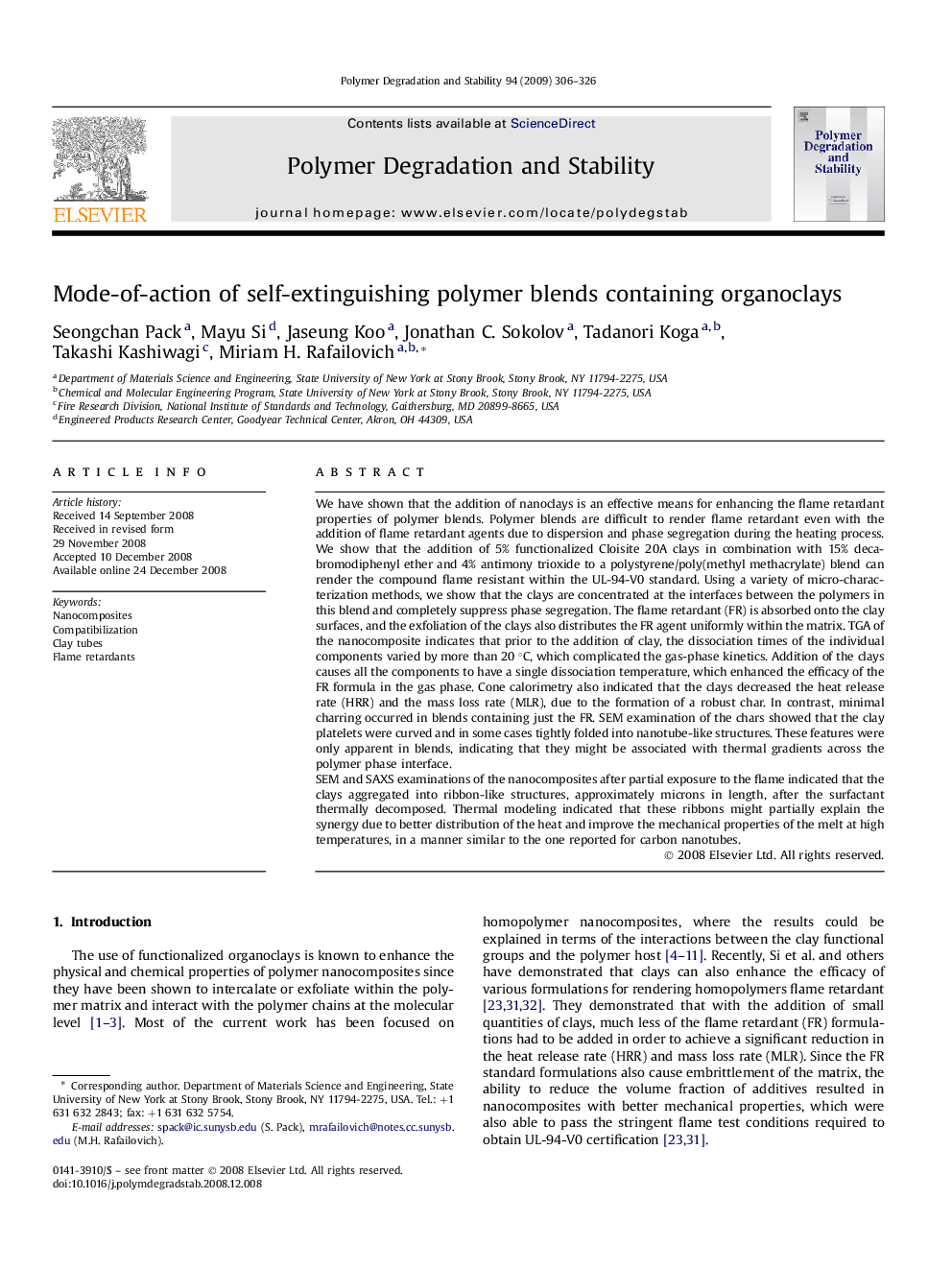| کد مقاله | کد نشریه | سال انتشار | مقاله انگلیسی | نسخه تمام متن |
|---|---|---|---|---|
| 5203612 | 1381936 | 2009 | 21 صفحه PDF | دانلود رایگان |

We have shown that the addition of nanoclays is an effective means for enhancing the flame retardant properties of polymer blends. Polymer blends are difficult to render flame retardant even with the addition of flame retardant agents due to dispersion and phase segregation during the heating process. We show that the addition of 5% functionalized Cloisite 20A clays in combination with 15% decabromodiphenyl ether and 4% antimony trioxide to a polystyrene/poly(methyl methacrylate) blend can render the compound flame resistant within the UL-94-V0 standard. Using a variety of micro-characterization methods, we show that the clays are concentrated at the interfaces between the polymers in this blend and completely suppress phase segregation. The flame retardant (FR) is absorbed onto the clay surfaces, and the exfoliation of the clays also distributes the FR agent uniformly within the matrix. TGA of the nanocomposite indicates that prior to the addition of clay, the dissociation times of the individual components varied by more than 20 °C, which complicated the gas-phase kinetics. Addition of the clays causes all the components to have a single dissociation temperature, which enhanced the efficacy of the FR formula in the gas phase. Cone calorimetry also indicated that the clays decreased the heat release rate (HRR) and the mass loss rate (MLR), due to the formation of a robust char. In contrast, minimal charring occurred in blends containing just the FR. SEM examination of the chars showed that the clay platelets were curved and in some cases tightly folded into nanotube-like structures. These features were only apparent in blends, indicating that they might be associated with thermal gradients across the polymer phase interface.SEM and SAXS examinations of the nanocomposites after partial exposure to the flame indicated that the clays aggregated into ribbon-like structures, approximately microns in length, after the surfactant thermally decomposed. Thermal modeling indicated that these ribbons might partially explain the synergy due to better distribution of the heat and improve the mechanical properties of the melt at high temperatures, in a manner similar to the one reported for carbon nanotubes.
Journal: Polymer Degradation and Stability - Volume 94, Issue 3, March 2009, Pages 306-326